A walk through Ancient Athens
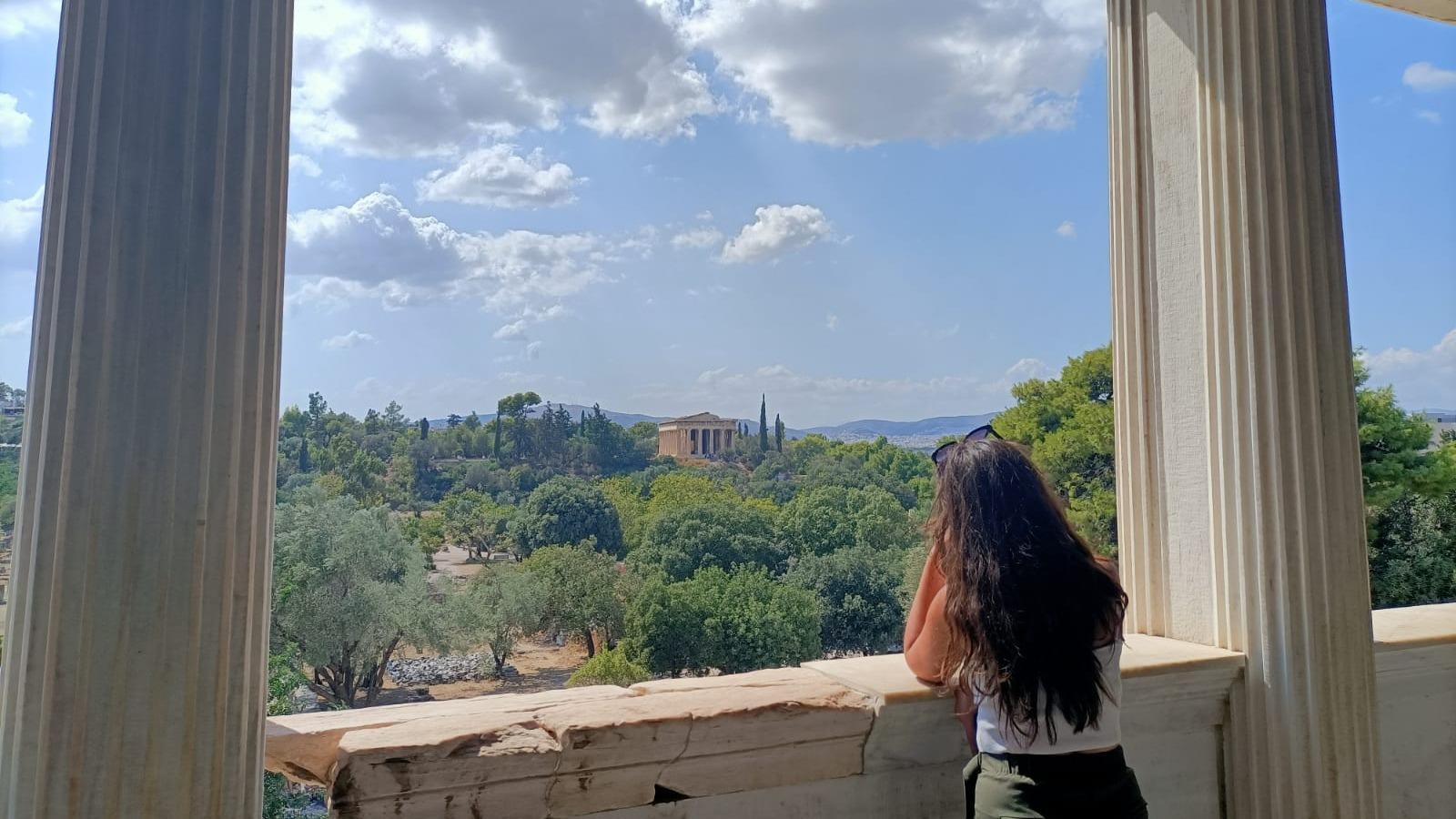
Hadrian's library
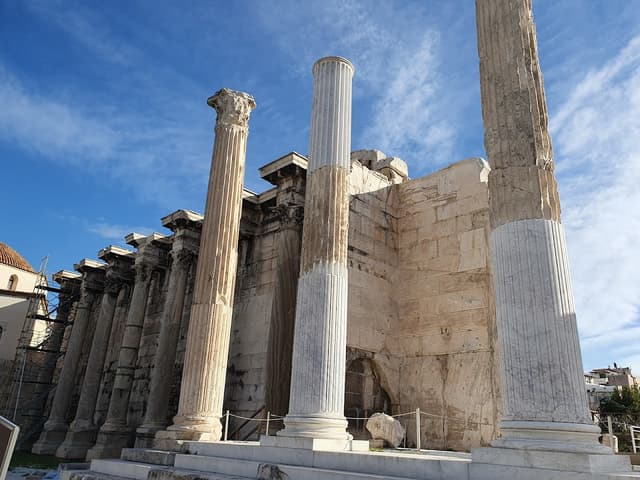
My first tip would be to never start your walk at the Acropolis. It does not matter how early you wake up, there is always people. Since the combined tickets can be purchased at any of the archeological sites included, the easiest option would be to go to a centric but lesser known monument such as Hadrian's library.
*Side note: tickets can of course be purchased online as well. However, some webpages add extra fees or can be a bit misleading (with prices and opening hours). Also, if you are under 25 and live in the EU you can enter for free but still need to get your ticket at any of the sites. I wanted to add as well that I went to Athens during the summer when the tickets are more expensive and the queues are longer, so perhaps during winter it is easier to start your visit whenever and wherever you want to.
I was there a bit after 9:30 AM and there was no queue and no people wandering around. Ancient libraries were places to atend lectures and discuss around their beautiful and quiet gardens. Hadrian's library (circa 132-134 AD) is no exception and its remains show why it was once the biggest library in Athens. The building was part of Roman Emperor Hadrian's plan to renovate Athens and stored not only books but also state documents. Worth the visit just to get close to and take pictures with the well-kept Corinthian columns at the entrance.
Temple of Olympian Zeus
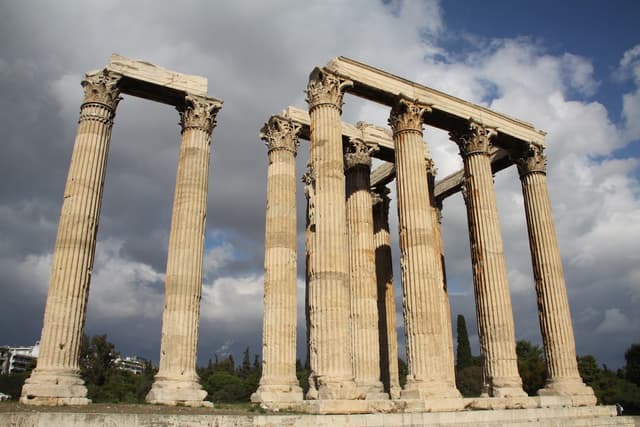
Although there are other monuments closer to Hadrian's library, I would recommend to go to this temple as early as possible since there is no way to hide from the sun once you enter the site. The morning walk can also be an excuse to visit Syntagma Square, Athens National Garden, Hadrian's Arch (just in fron of the temple) and even the Panathenaic Stadium, the only stadium in the world built entirely out of marble. This stadium was used during the first modern Olympics after being renovated.
It took the Athenians around 600 hundred years to finish the Temple of Olympian Zeus (or Olympieion, as Zeus was the King of the Gods and therefore Olympus), so I feel like everyone should at least go see it as a sign of respect. Although it is not the most impressive archeological site, it is worth a visit if you are in the area. Apparently once the Roman and Greek gods were no longer worshiped the remains of the temple were used to provide materials for churches and houses, damaging it even more.
Ancient Agora
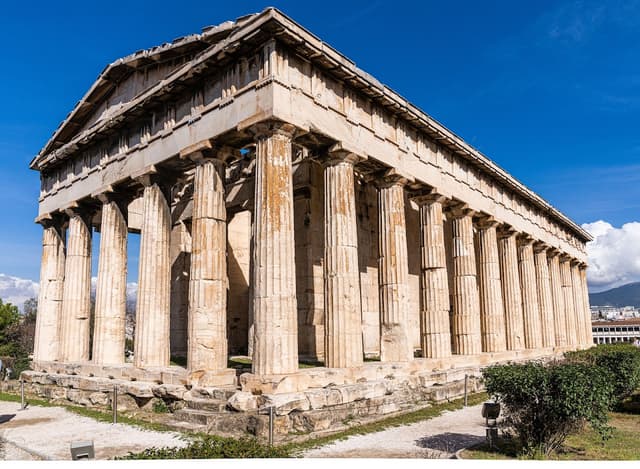
If it's getting too hot outside and you are too far away from a museum (or just simply don't fee like visiting one), the Ancient Agora of Athens is your best option. The Stoa of Attalos (one of many building used for socialising) has been reconstructed and is now a museum where you can see anforas and other artefacts while avoiding the heat and pretending you actually teleported to Ancient Greece (the cover picture of this guide was taken on the second floor of the Stoa).
There's a few other Stoae, altars and temples plus places to sit down in the shade. I would also like to mention the Temple of Hephaestus, a really well-preserved one from which you can get a nice view/picture of the Acropolis.
The agora was a gathering place, the heart of ancient Athens, so feel free to wander around and feel like a proper citizen of the polis for a while.
*Side note: both the Roman Agora and the Archeological site of Kerameikos (which will be described below) are pretty close to the Ancient Agora. If it's early and not too warm it might be worthy to see the three of them othgether. Otherwise save them for your walk on day 2 as they are also next to the Acropolis, which should be done first thing in the morning.
Acropolis of Athens
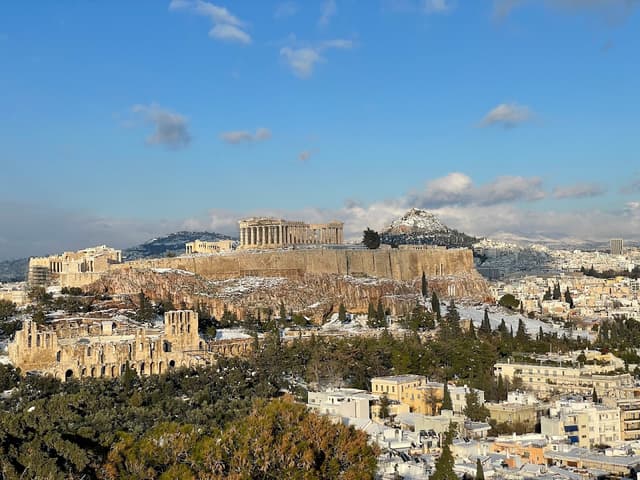
Is the Acropolis always crowded? Yes. Is it worth it? Definitely. And I know is a cliché but do try to be early (I was there around 9:30 AM and some people were already leaving the site) to avoid people who come with organised tours or in cruises. Also, as a person who loves Greek mythology it took me like three hours to see everything and trust me you don't want to be up there at 12:00 PM.
There is two entrances but I would recommend going in through the Propylaea or monumental gateway and then leaving through the Theatre of Dionysus (god of wine, fertility, festivity, theatre, insanity). You won't be able to avoid people anyways and the main entrance is much more impressive. Also, marble tiles can be a bit slippery so be careful with your shoe choices.
Although there is evidence that people inhabited the area of the Acropolis for ages, most of its major temples including the Parthenon were rebuilt during the Golden Age of Athens under Pericles command. Athena was the patron of Athens and so the three main temples standing today are somehown dedicated to her. South of of the entrance there's a small temple dedicated to Athena (war and wisdom) and Nike (victory). Then there is of course the Parthenon or Temple of Athena Parthenos (Athena the Virgin). Finally, east of the entrance is the Erechtheion, which was dedicated to Athena and Poseidon (sea, earthquakes, horses)-Erechtheus.
According to mythology Athena won a contest against Poseidon to become the citiy's patron deity. Athena offered the first olive tree as a gift to the city while Poseidon gave them the first horse/a spring of salt water (depends on the source). Athena won but I guess the Athenians didn't want to anger Poseidon too much as they are pretty close to the sea, so I guess they gave him a section of a temple in return.
There are other sanctuaries like those dedicated to Zeus, Artemis (hunt, moon, wilderness) and Asclepius (medicine) as well as theatres such as the Odeon of Pericles and the one dedicated to Dionysus, You will need plenty of time (and water and sunscreen) to see every detail and to take pictures (there is some inspo on my insta, link in bio). Even though it's crowded it is not impossible to get a picture without any people, just be patient and try to enjoy the monuments in the meantime.
I you need something relaxing after finishing the Acropolis I would recommend to visit it's museum. The entrance is next to the Theatre of Dionysus and it has a lot of artefacts and missing pieces from the monuments. It also explains how the Parthenon was destroyed and renovated through history (including fires and bombings).
*Side note: the best view of the Acropolis (in my opinion) is from the Philopappos Hill. It is free entrance, easy to get to the top and there are ruins along the way. Mount Lycabettus is a bit too far away, a bit too high, and a bit too touristy. Also the cable car is quite expensive and getting to the top by foot in the summer might be deadly.
Roman Agora
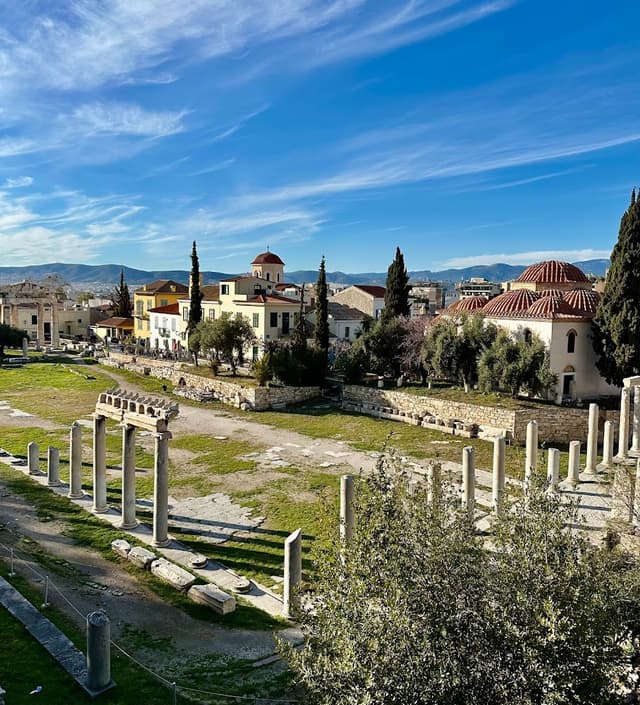
As mentioned before the Roman Agora is really close to the ancient one. It seemes not to be fully excavated and was built thanks to money donations made by Augustus. The most interesting building is the Tower of the Winds, which is considered the first meteorological station (1st century BC). It was also a clock tower. Other monuments include a few archs (entrances) and a colonnade, plus roman public toilets. It is quite unique to view greek ruins such as the Acropolis from a roman archeological site that is also close to many churches and bars and brunch places.
Kerameikos Archeological site
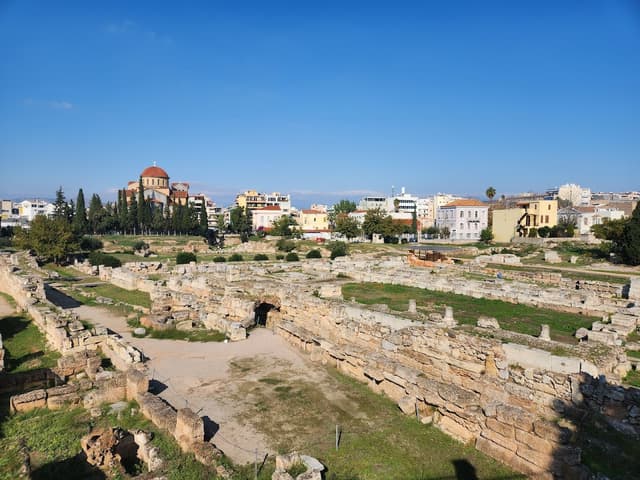
It was the potters' quarter (the word ceramic is derived from kerameikos latinised form ceramicus) and also a cementery. The area of the site goes beyond the limits of the ancient city and many of the statues are located in the Sacred Way, which connected Athens and Elusis. In ancient times there were processions held every year for the cult of Demeter (agriculture and harvest) and her daughter Persephone (spring, also associated with the afterlife after her marriage to Hades) as part of the Eleusinian Mysteries.
The remainings of the walls are really underwhelming but its connection to festivals and the statutes around the area are quite fascinating. I do belive there's a lack of historical information but it tends to happen in all sites. The only issue is that when you're standing next to blocks of stone instead of temples is quite harder to imagine what's going on. I do love doing some research before or while visiting these places but it might not be for everyone. Just remember that is quite special for those ruins to be here at all and even more special for us to be able to see them. Also, change of topic, the toilets in most of these sites are usually quite nice and clean.
Aristotle's Lyceum
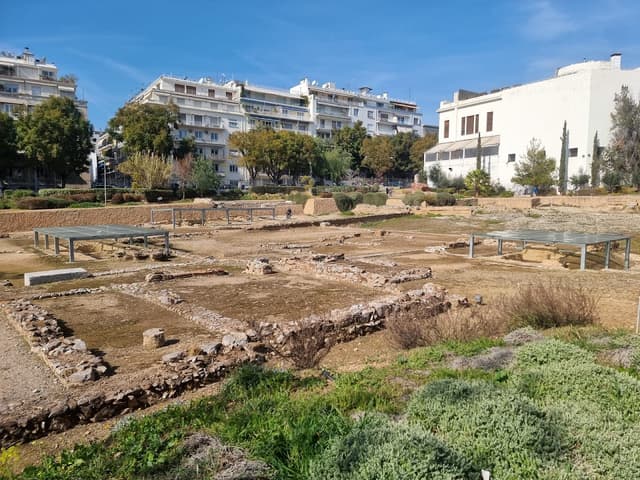
The last site is also (in my opinion) the least interesting because basically there's no remains of the Lyceum at all. I would leave it as a "if we have time" kinda place. There are some nice museums around and the toilets are again quite clean (trust me it is important) but sadly the ruins give nothing. I would even swap it for the National Archeological Museum, which is quite big and full of well-preserved statues and other bits and bobs.
The Lyceum is located outside of the limits of the ancient city and was used for many purposes like education, gatherings, cult practises and exercises. It is of course mainly known for the Peripatetic school which was founded by Aristotle. And just as Aristotle fled Athens I fled the site to get away from the sun.
This is my guide to the main archeological sites of Athens. Make sure to make time to walk around and do some shopping in Plaka and Monastiraki! I hope you enjoy Athens as much as I did!
The home for unique & authentic travel